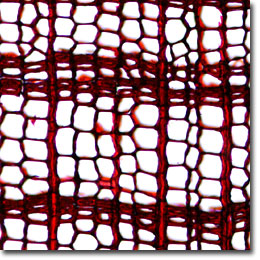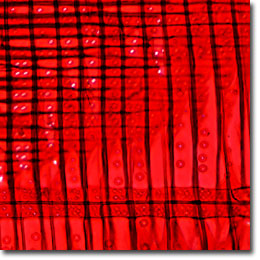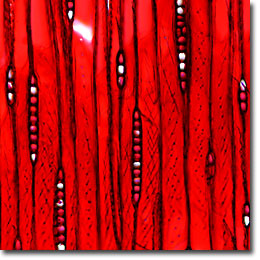The Redwood
The Redwood (Sequoia sempervirens; also known as the Coast Redwood and California Redwood) is a softwood tree found primarily in damp valleys of the coastal northwestern states of California and Oregon. Sapwood from this softwood tree is narrow and very white, while the heartwood is light red to deep reddish brown.

Cross Section

Radial Section

Tangential Section
The Coastal Redwood and the Giant Sequoia tree are named after the Cherokee Indian Sequoyah, honoring this distinguished chief who conjured an alphabet for his people and whose statue stands in the rotunda of the United States Capitol.
The redwood is one of the world's tallest trees (if not the tallest) and some specimens have been measured at lengths of 350 feet. The tree has a reddish-brown and spongy bark with deep furrows, from which the name is derived. Propagation of the redwood is by seed, but the tree often grows shoots from stumps. Redwoods require full sun and a reasonably well-drained acid to neutral soil. A member of the Bald cypress (Taxodiaceae) family, the redwood has oblong leaves growing from about a quarter-inch to an inch long and small one-inch cones that are not ornamental.
Redwood is used for general building construction (timbers, sills, joists, and building lumber) because of its durability combined with strength and availability in large sizes. It is also heavily used in mill products such as blinds, siding, ceiling joints, a vaiety of molding designs, and general millwork. Other uses include fences, patios, boxes, crates, caskets and coffins, tanks, vats, cooling towers, and cigar-tobacco boxes.
Microscopic examination of iron-alum hematoxylin and safranin stained thin sections (see the digital images presented above) reveals tracheids averaging 50 to 65 micrometers in diameter, and bordered pits in one to three rows on the radial walls. Tangential pitting is present in the last few rows of late-wood tracheids. Ray parenchyma pits are oval with lenticular orifices, and the tissue is lacking resin canals. Rays are uniseriate, but some are biseriate and occasionally multiseriate.